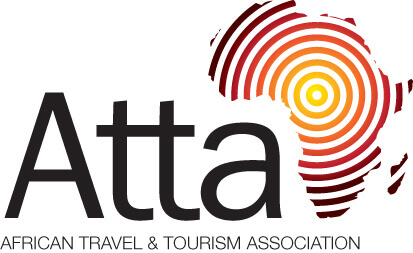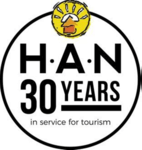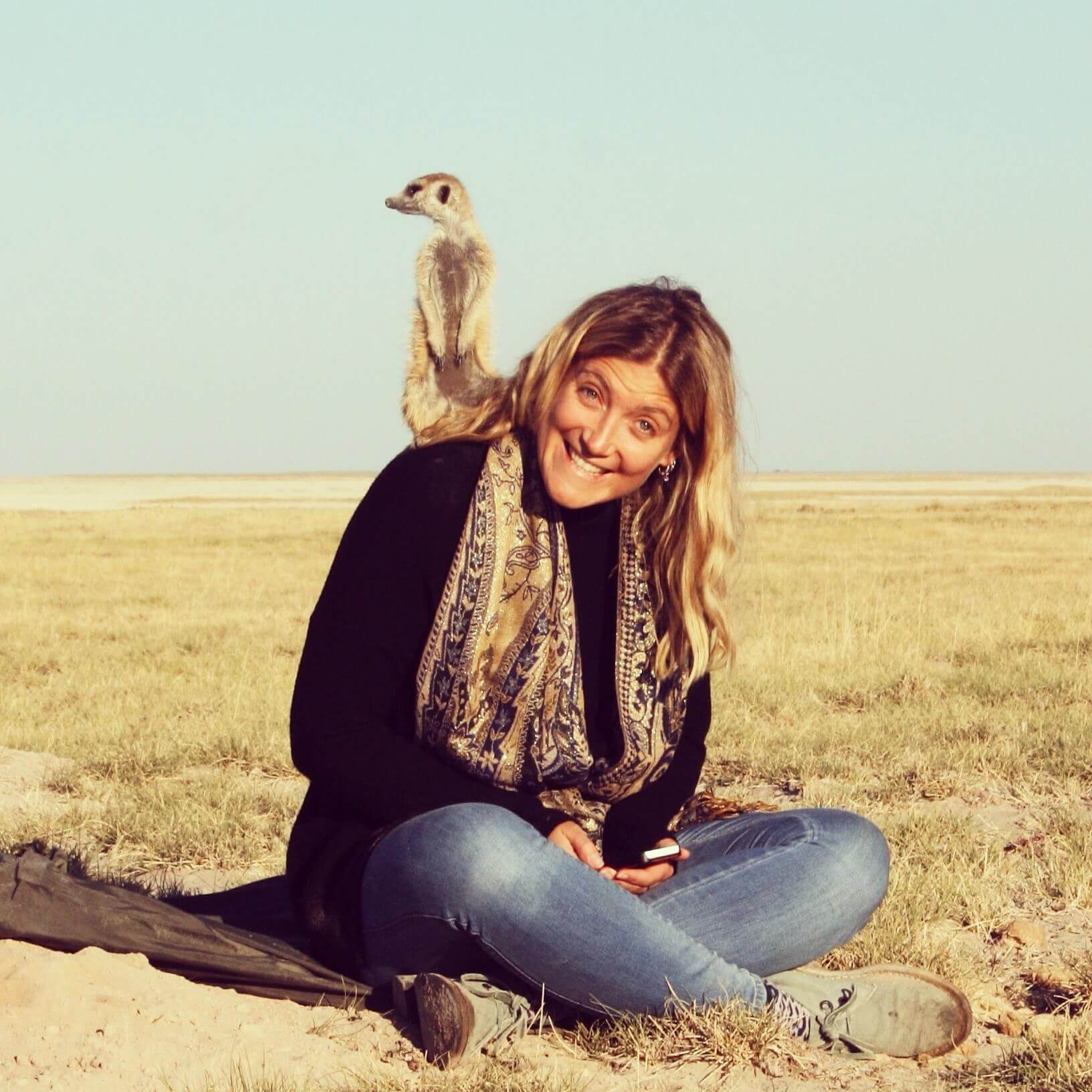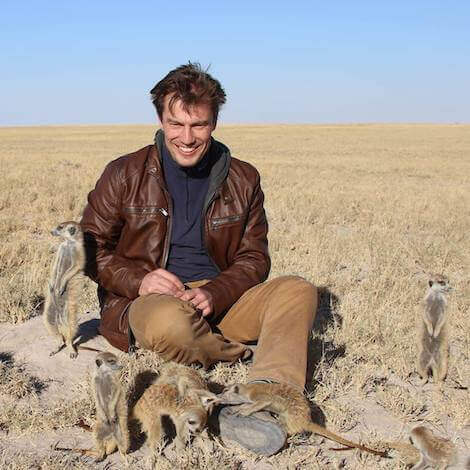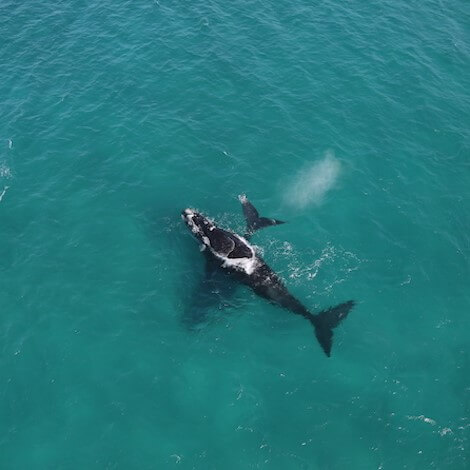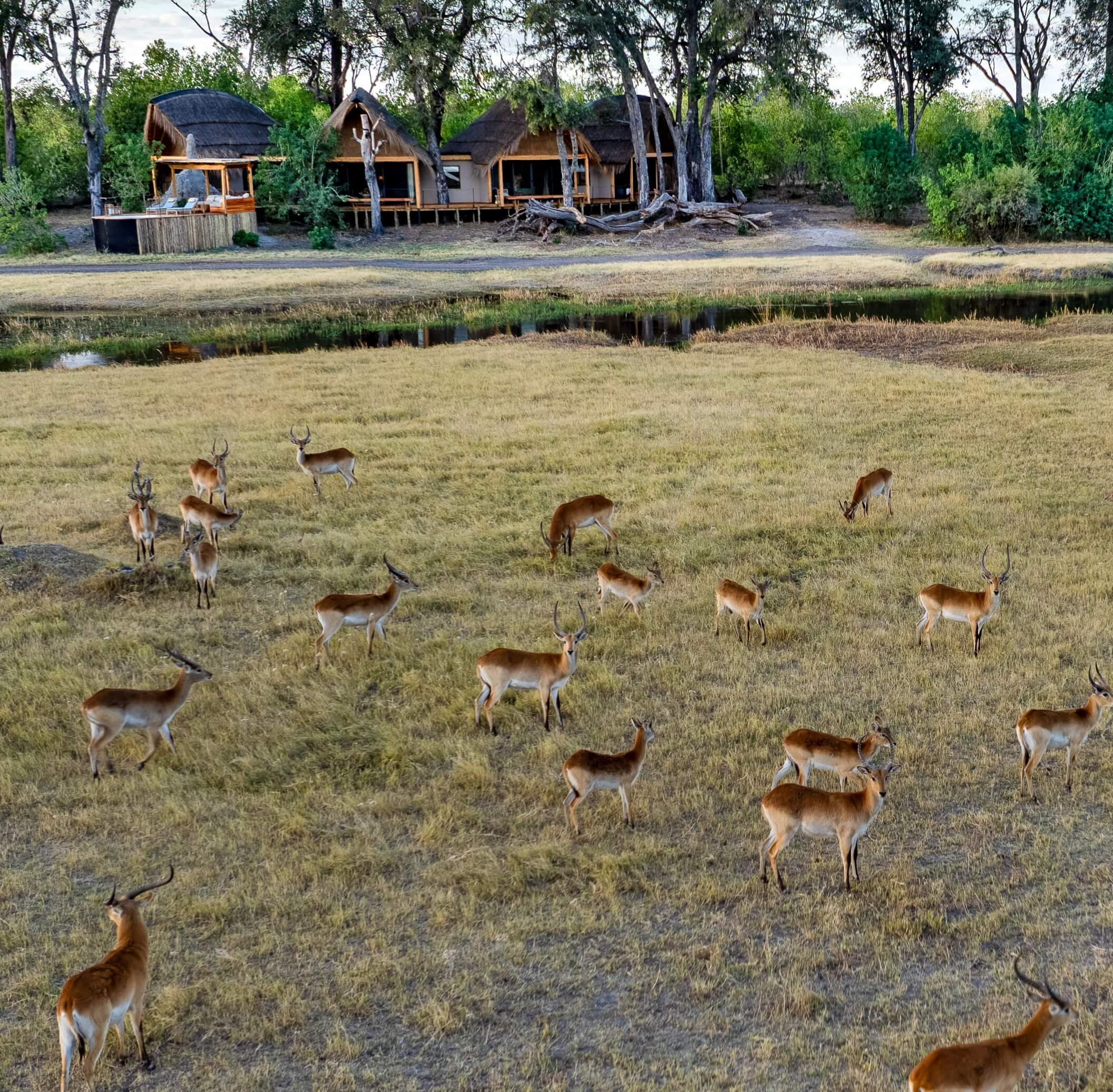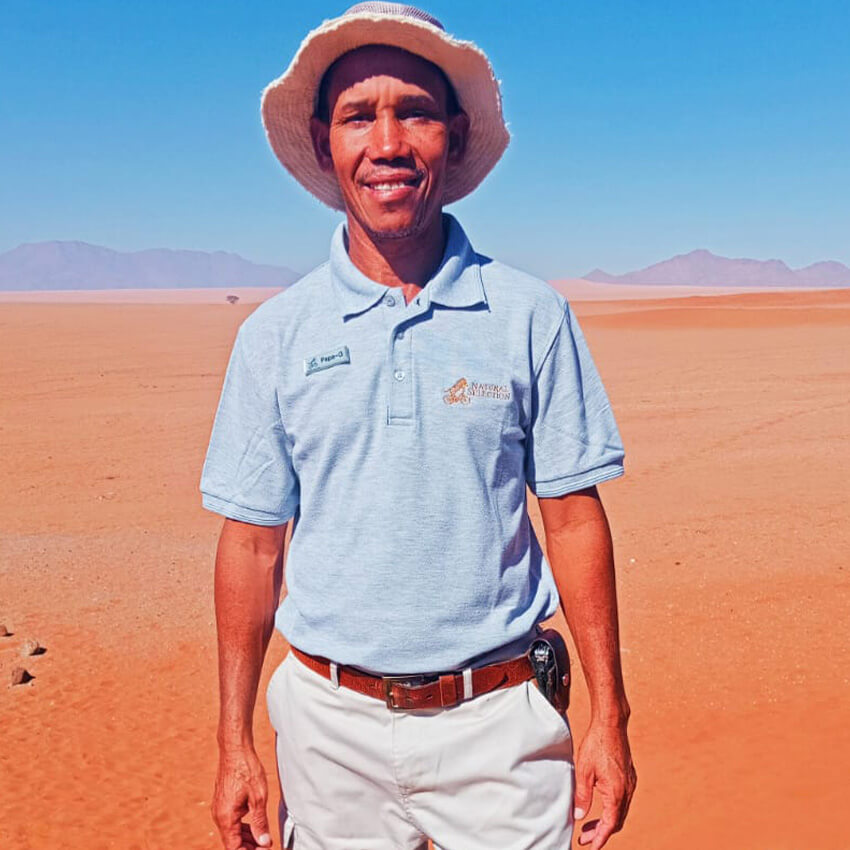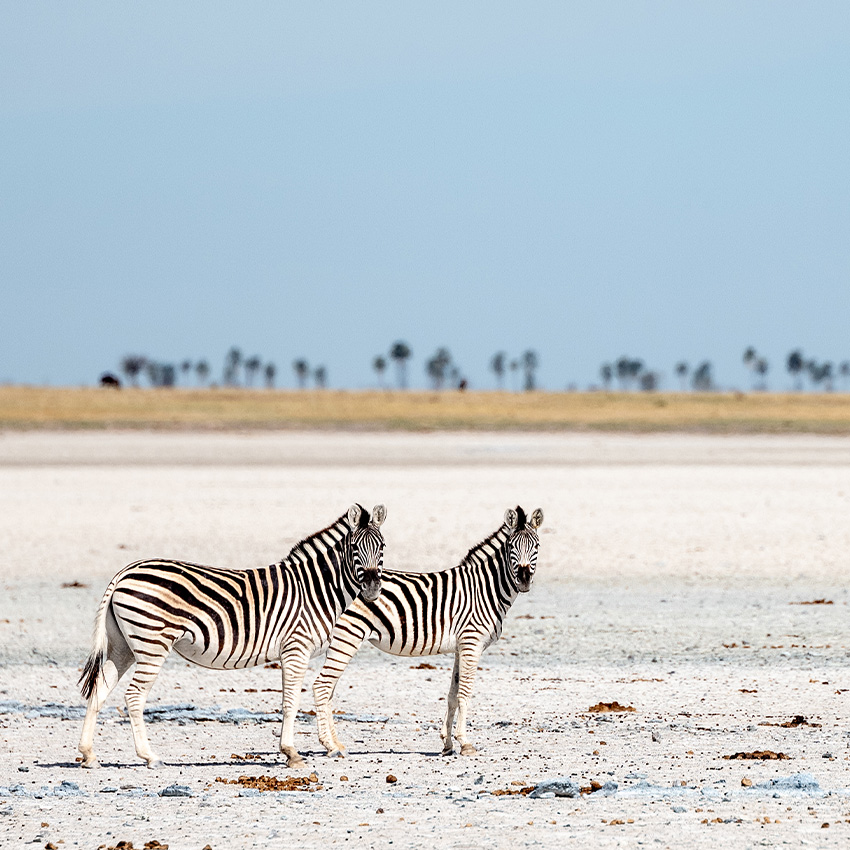Active
Popular
Etosha Heights Private Reserve: Etosha Wildlife Without The Crowds
 Anton Crone
Anton Crone
 February 14, 2023
February 14, 2023
After morning sunlight reaches the foothills of Etosha Heights Private Reserve, red-billed queleas darken the sky in a flock of thousands. They bend tree branches with their voluminous number as they perch near a waterhole. By some invisible signal, the flock descends to drink en mass, running the gauntlet as a lanner falcon dives into their midst. One quelea is separated. The pursuit is frenetic. the little bird darts this way and that until it gains on the larger predator which can’t match the sharp turns. The Formula 1 car of the skies is beaten by the nimble go-kart and breaks off leaving the quelea to return to the sheltering flock.
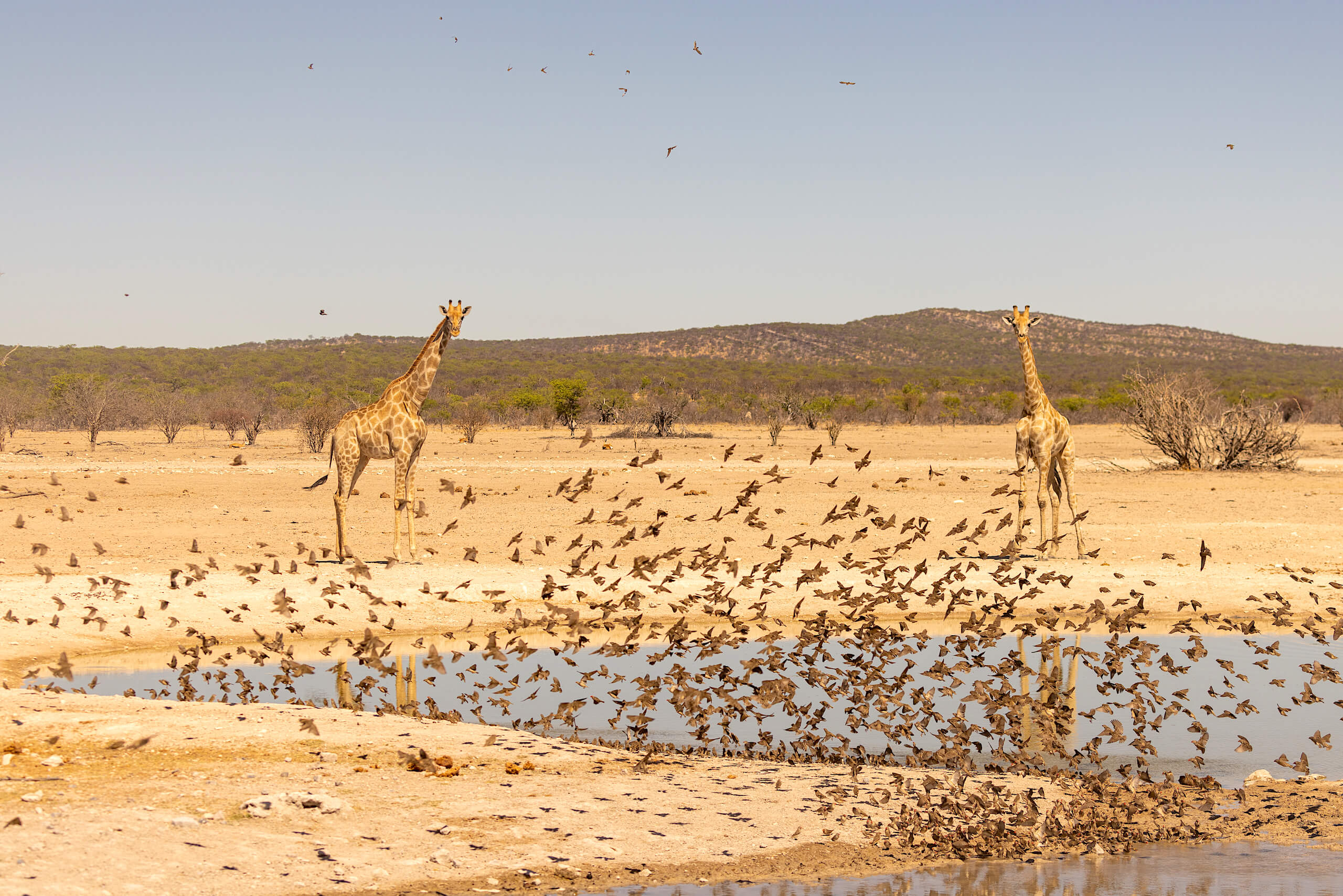
Elephants are unfazed by this mini drama. They have caught the scent of water raising great plumes of dust in their last dash to the water’s edge. Flanked by towering elders, elephants calfs are first to unfurl their little trunks, sucking up great gulps of water and curling them back into their mouths where they spray and drink in a gurgling cacophony.
Zebras wait their turn nearby, and giraffes hang further back, peering above the treeline – a hierarchy as old as these hills. Tawny eagles stand sentinel on trees up the slope, watching the vast plains below. There, a shadow in an acacia thickets sends koorhaans reeling into the air, alerting springbok, eland and gemsbok which scatter at the hint of danger.
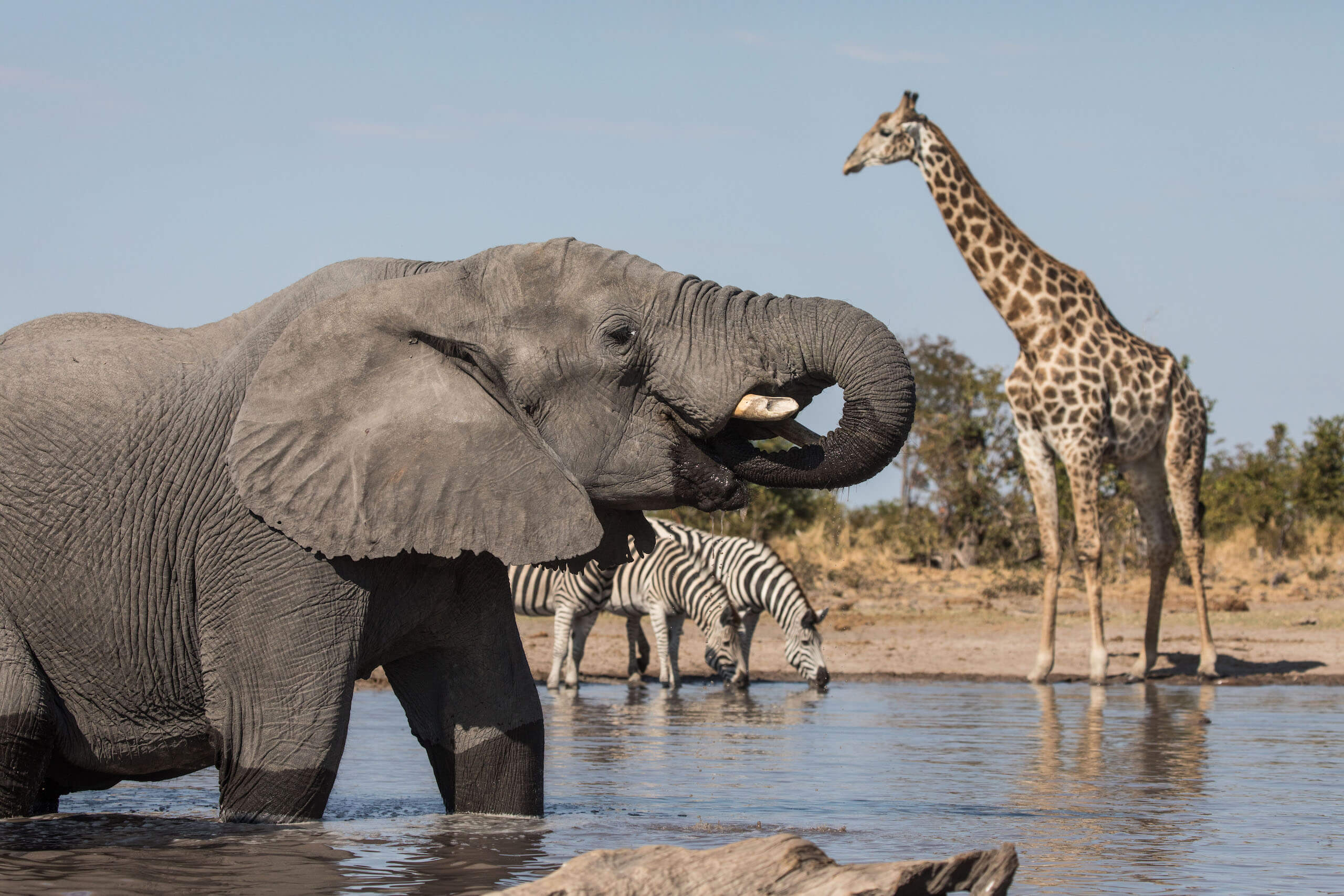
A young eland wasn’t so lucky this morning. We find five lions feasting on its carcass while the rest of the pride rests nearby, stomachs bulging, snouts bloody. We are the first to arrive at the scene, the lions too engrossed in their feast to worry about our safari vehicle as it stops nearby. My guide, Michael Haindongo, points out a pair of jackals lurking just beyond the acacia thickets. Soon the lions will have had their full and they’ll rest here until the growing heat forces them into the shade, he explains. Then the jackals will move in for the scraps, followed by vultures and hyenas until nothing is left but clean bone.
After revelling in the lion feast, we move off to revisit the fresh tracks of black rhino which Michael noticed earlier. The spoor disappears into dense thickets. Michael drives on eventually circling back to the other side of the thorny trees where he picks up the trail once again. Before long we find the owner of the spoor, a young male settled beneath a shady tree. We stop at a good distance, careful not to startle this skittish, volatile creature which appears so peaceful here at rest.
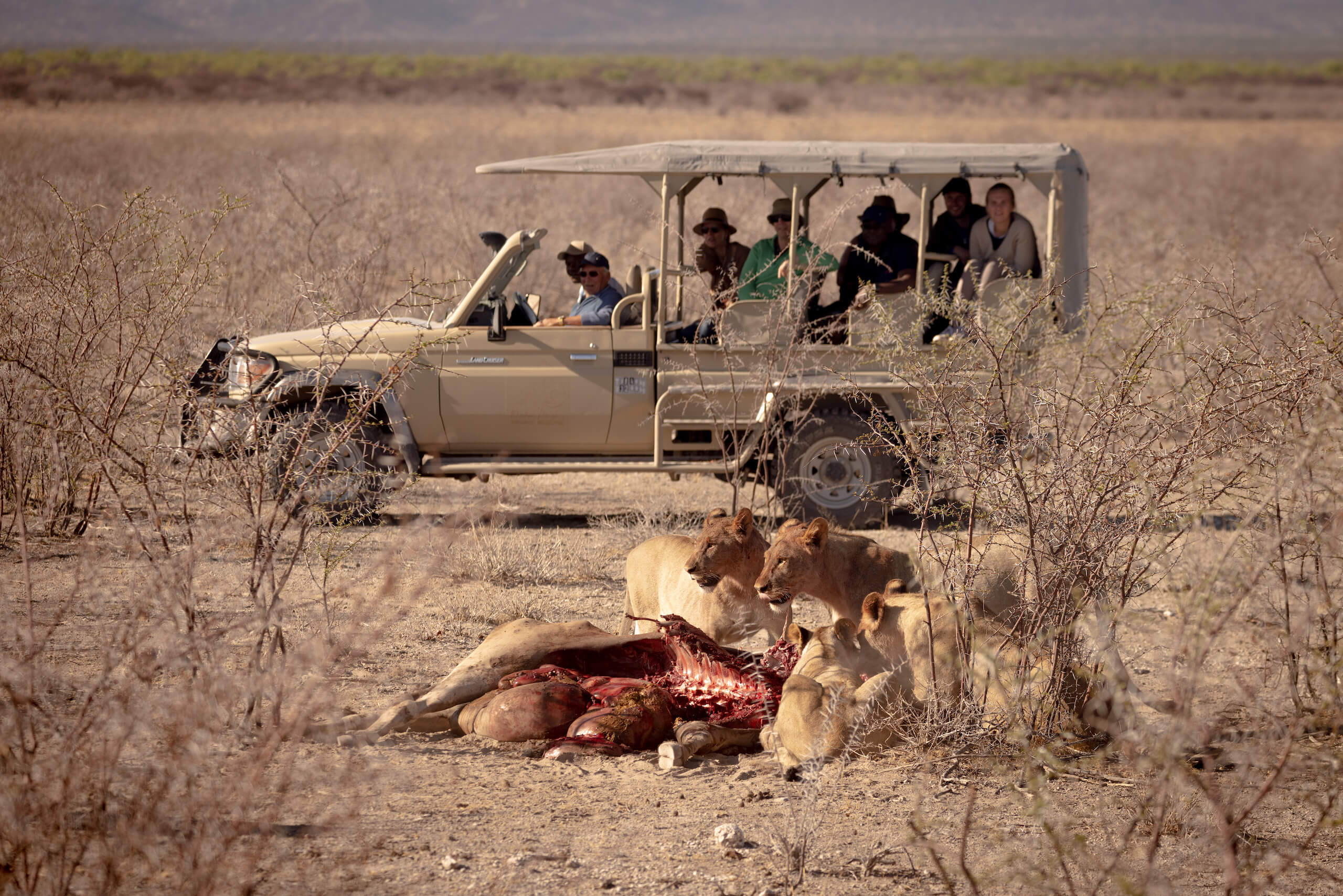
This is one of the greatest attractions of Etosha Heights Private Reserve. Black and white rhino are well at home here in this 60 000 hectare reserve, the environment of which is so diverse that it accommodates both species. Black rhino browse on the low trees and bushes on the rocky foothills and along the edge of the plains while their white cohorts graze on the tall grasses that carpet the vast flatlands. This unique reserve boasts a 65 kilometre long boundary with Namibia’s celebrated Etosha National Park, and while the park is much larger (at 2,2 million hectares, the 6th largest in Africa) with an enormous salt pan at its core, it is predominantly flat. As such, the reserve is a worthy companion as the rise land rises steadily towards Etosha Hills where the variety of plant and wildlife species multiplies making this a prime safari area – a rich taste of Etosha, without the crowds.
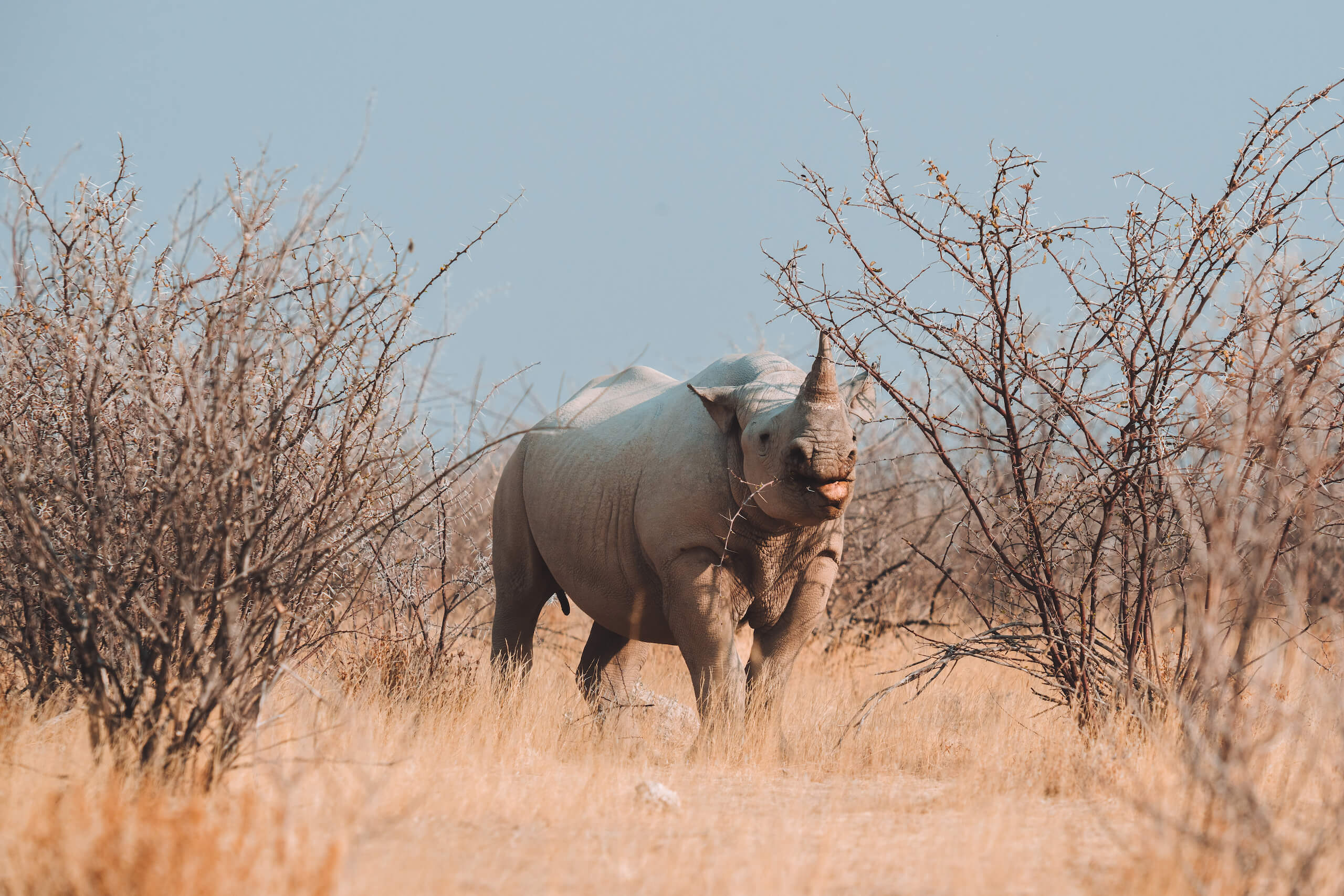
Two luxury lodges, Safarihoek and Mountain Lodge, stand proudly on the hills overlooking the plains. Safari House, an exclusive domain for a family or small group shares this expanse, and that is all. As one of the largest private reserves in Namibia, it is therefore one of the least populated – by humans. When it comes to wildlife, personal space is an issue. Herds of antelope are vast here, including the largest collection of eland I have seen. The horns of oryx pierce every expanse of sky. Great dazzles of zebra drink in uniform rows and they are sometimes joined by their cousins, rare mountain zebras that tread gingerly over the rocky hills to reach the waterholes below.
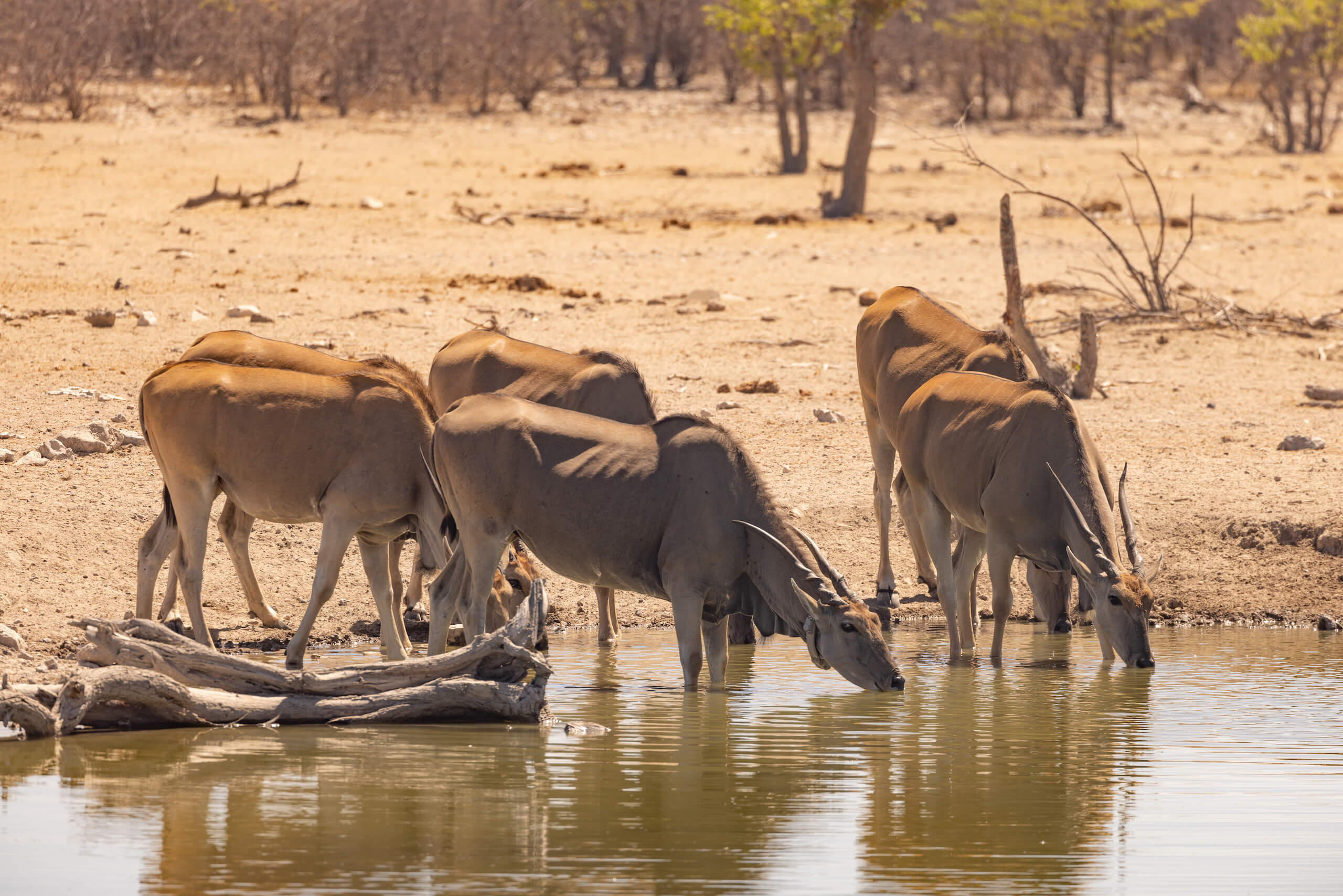
One particular waterhole at the foot of Safarihoek almost becomes my second home. Here a two story hide offers extraordinary viewing opportunities with a bottom floor that is level with the water so you can look directly into the eyes of animals as they drink. The toes of elephants sometimes get in the way, and the dainty tips of their trunks dance in front of you. The top floor of the hide is an idyllic nest from which you can to take in the entire landscape and all its life while enjoying cool drinks and delicious meals served by Safarihoek’s friendly staff.
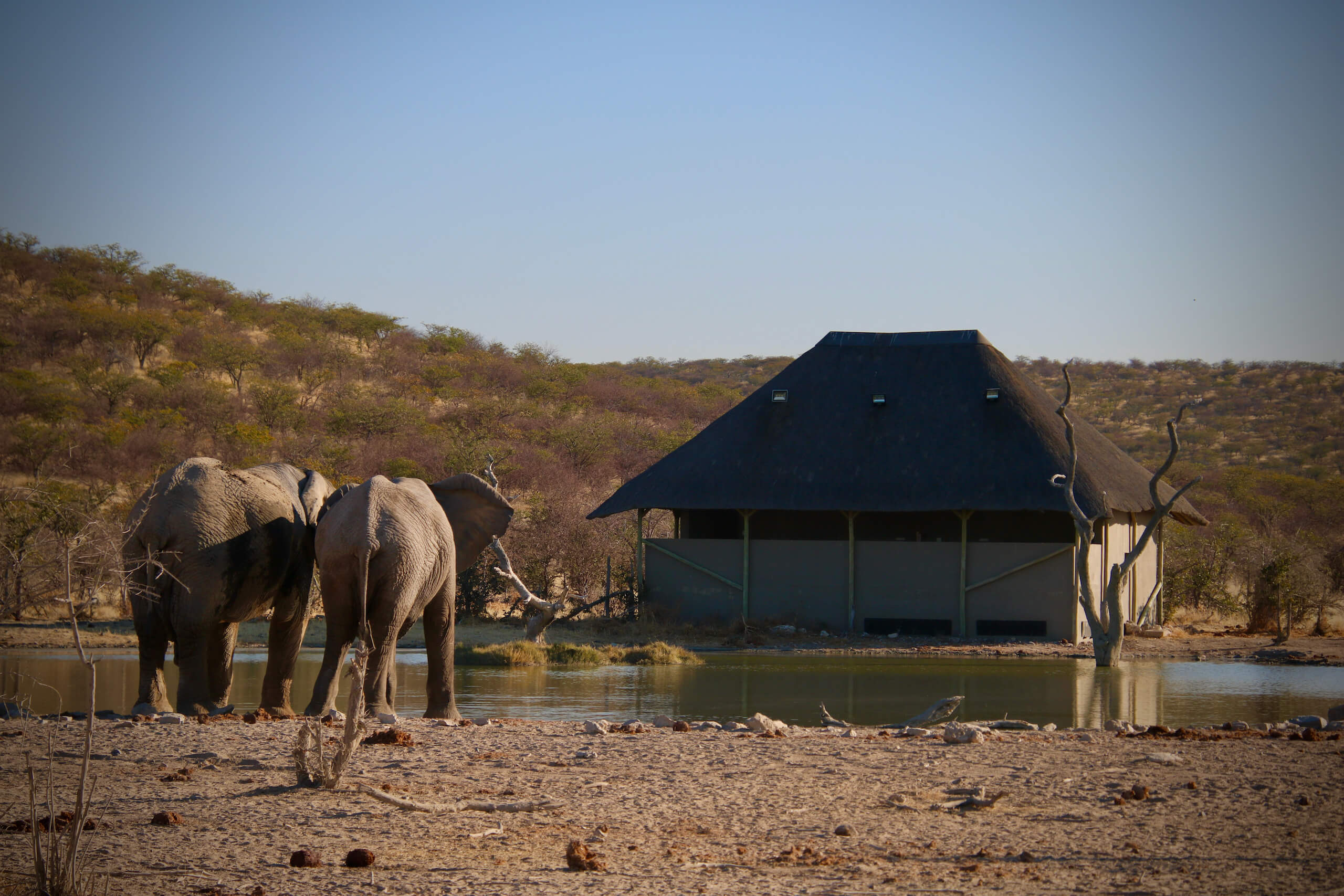
A resident barn owl makes an appearance on the rafters in the evening, and as the sun descends, LED lights come to life revealing the night shift. Nightjars dance in the glow as they hunt insects, a white rhino and her calf materialise like ghosts at the edge of the tree line, then make their way to the water. A lone hyena sniffs the air before creeping in, and giraffes break the skyline as they glide closer. The last vestige of sunlight frames the scene in a blood red hue, and the stars twinkle above. It is a photographers dream.
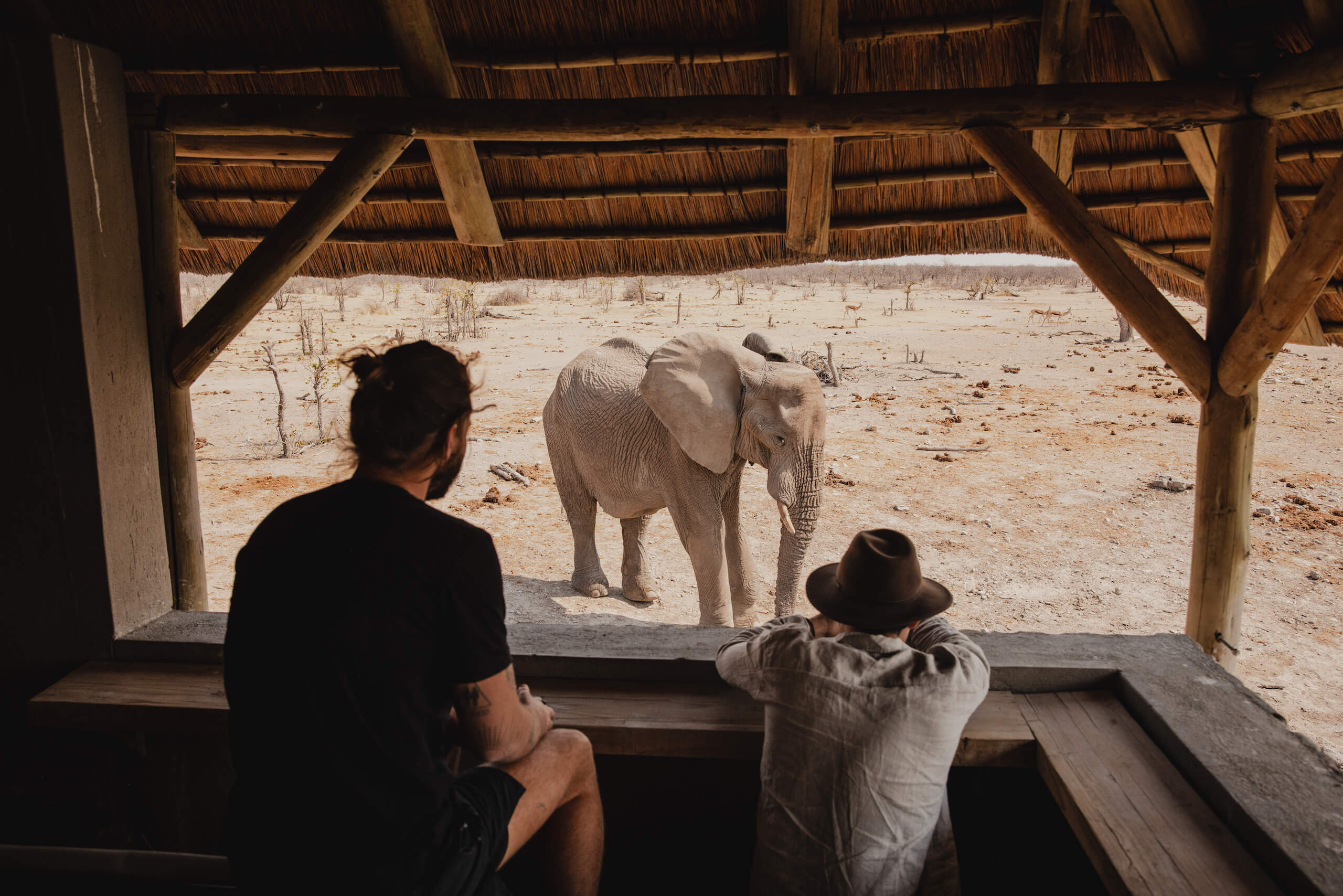
Previously catering for hunting safaris, the owners transitioned solely to photographic safaris in 2016, adding their vast property and wildlife expertise to the ever-growing conservation and ecology efforts across Namibia. A bevy of wildlife researchers is permanently stationed here, and a large team of rangers patrols the reserve on foot and by air to prevent poaching.
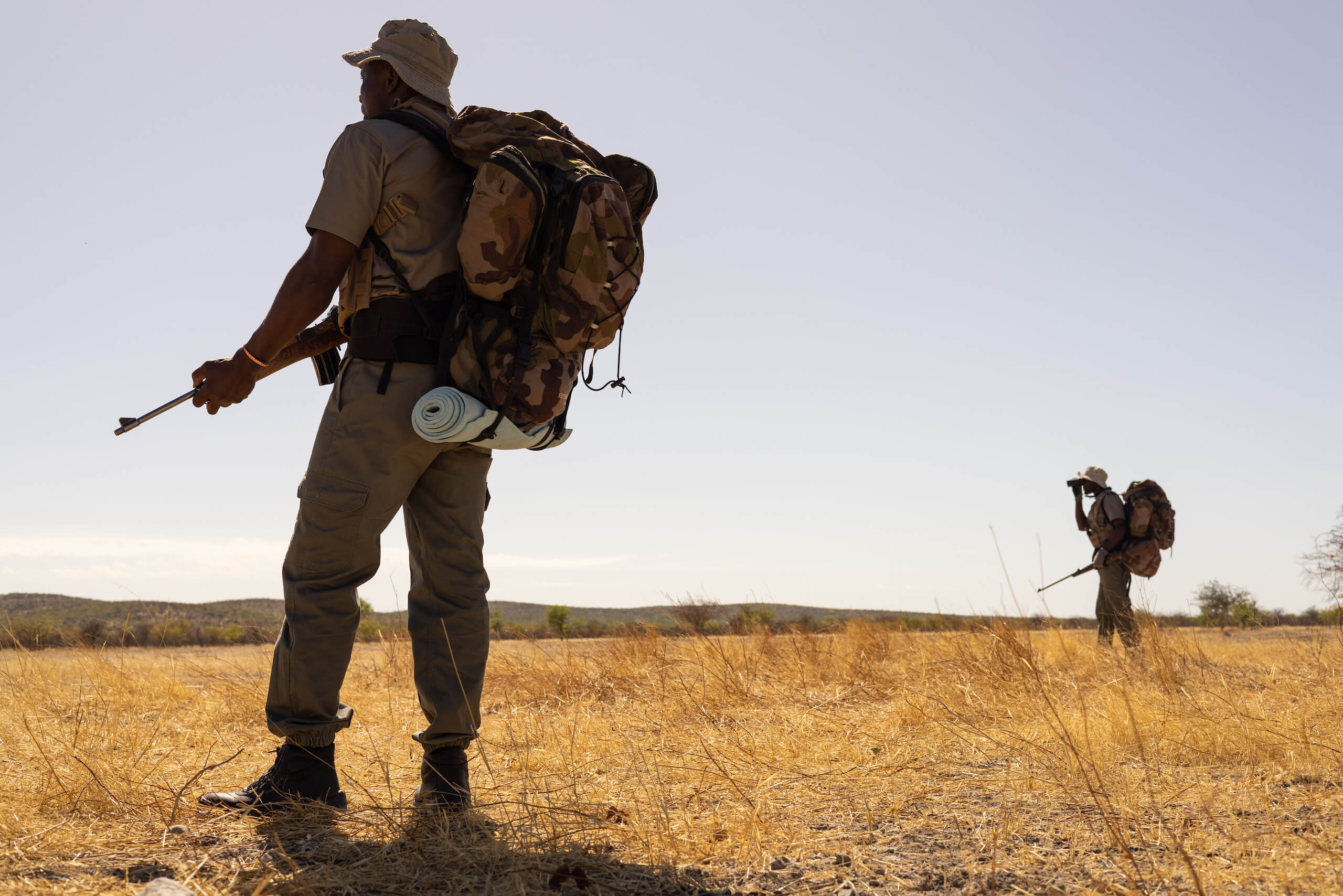
The owner of the reserve, Andre Nel, invites me to his home. In the cool shade of the porch, we chat over cold Tafel lagers and a delicious lamb stew cooked in an old iron stove. Proper Namibia fair. Having spent just three days here, I am already waxing lyrical about the wildlife we have seen, the number, diversity and remarkable behaviour of species. Andre is astonished as I describe how a martial eagle flew into a whirlwind, circling in the dusty gyre to gain height. The enormous eagle was joined by a white backed vulture and so the air ballet became a duet.
This is one of the things André says he loves about this place: the promise of surprise around every corner. Ultimately his dream is for Etosha Heights Private Reserve to become the top wildlife destination in Namibia. They aim to encourage neighbouring landowners to drop the fences on their periphery and increase the wildlife area to as much as 300 0000 hectares.
As a sign of my appreciation of the plan – and on a bit of a lark – I ask if there are any nearby game farms for sale. Unsurprised, André points out a 4 000 hectare property nearby with 1 000 hectares on the border of Etosha Heights. Buy it and drop the fences, he says. Join us. For the first time in the decade I’ve been photographing and writing about wildlife in Southern Africa, I am tempted.
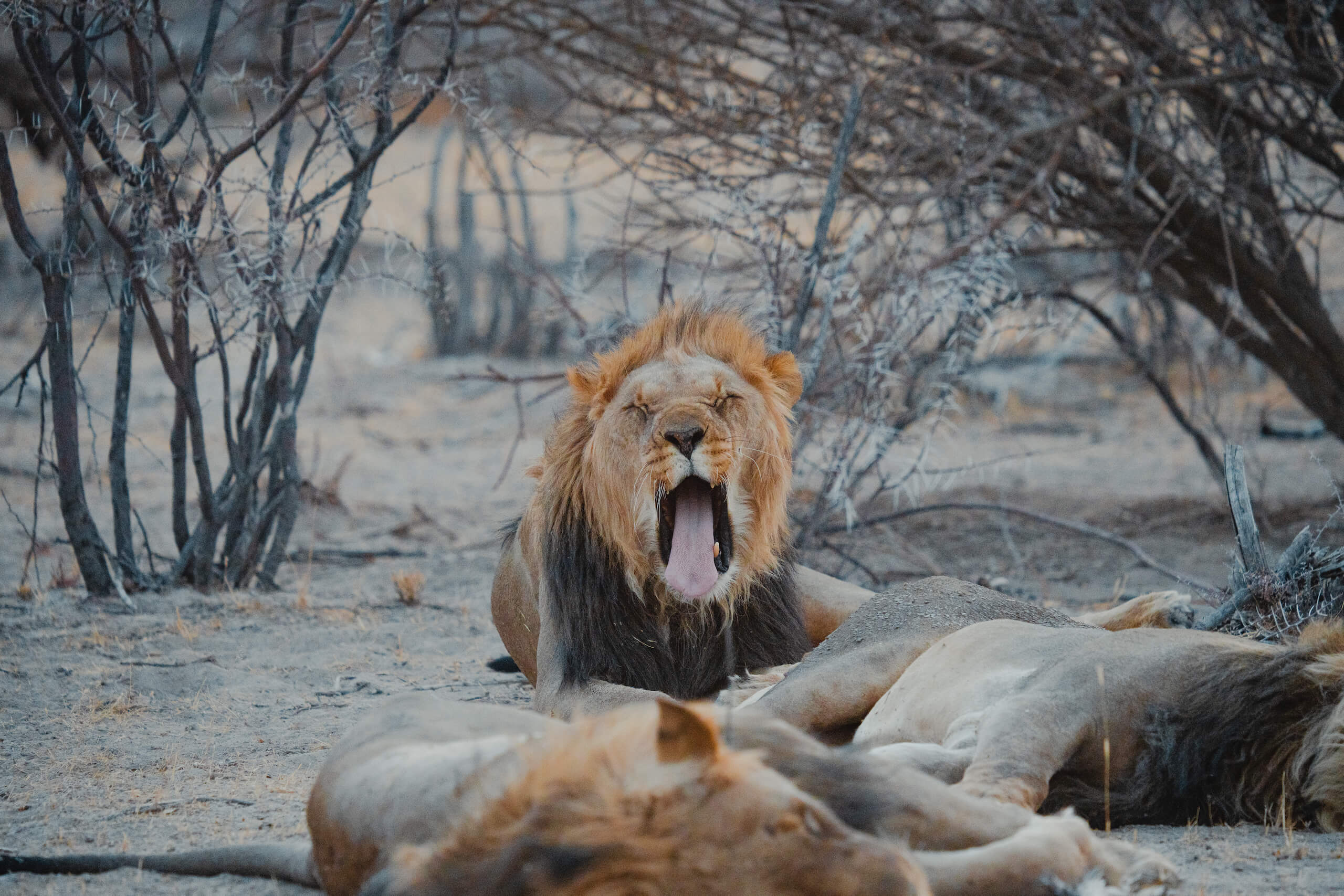
Driving back toward the hills with Michael, I realise how drawn I am to this place and silently contemplate buying a game farm I can’t really afford. Perhaps to justify my feelings, I ask Michael what drew him here. His story captivates me.
Born to parents who were fighting for the liberation of Namibia, (then South West Africa) Michael was raised north of the border in an Angolan refugee camp. By the age of ten he had been relocated to Cuba where he was schooled in a UNICEF program and taken under the wing of a kind, elderly couple. His return to Namibia was sparked by the country gaining its independence – a place he had never truly known. Here he finished high school, embarked on a boxing career, and studied nature conservation, inspired as he was by the Cuban couple who were avid birders and involved him in their pursuits of nature while growing up. Since then he has studied the wild as a student guide in Damaraland not far south of Etosha, in South Africa on an intensive FGASA course, and as a guide at the remarkable Londolozi game reserve near Kruger National Park. His return to Namibia took him through many of its celebrated wilderness areas culminating in Etosha Heights Private Reserve in 2019.
Covid and the lack of tourists gave him the freedom to explore the reserve intimately, he laughs. “It’s so diverse!” he exclaims, stopping to dig out his phone and show me images of the green season in March. The same dry plain we are driving through, where zebras kick up dust, is a riot of tall green grass where elephants tug great tufts out of the ground.
As we enter a clearing, we spot a breeding herd of about forty elephant and veer off to get ahead of them. We meet them at a waterhole surrounded by succulent mopane trees. As the first calf appears through the foliage, tromping ahead of the heard, a flock of quelea descends on a tree. In the distance, a lanner Falcon flies in wide circles.
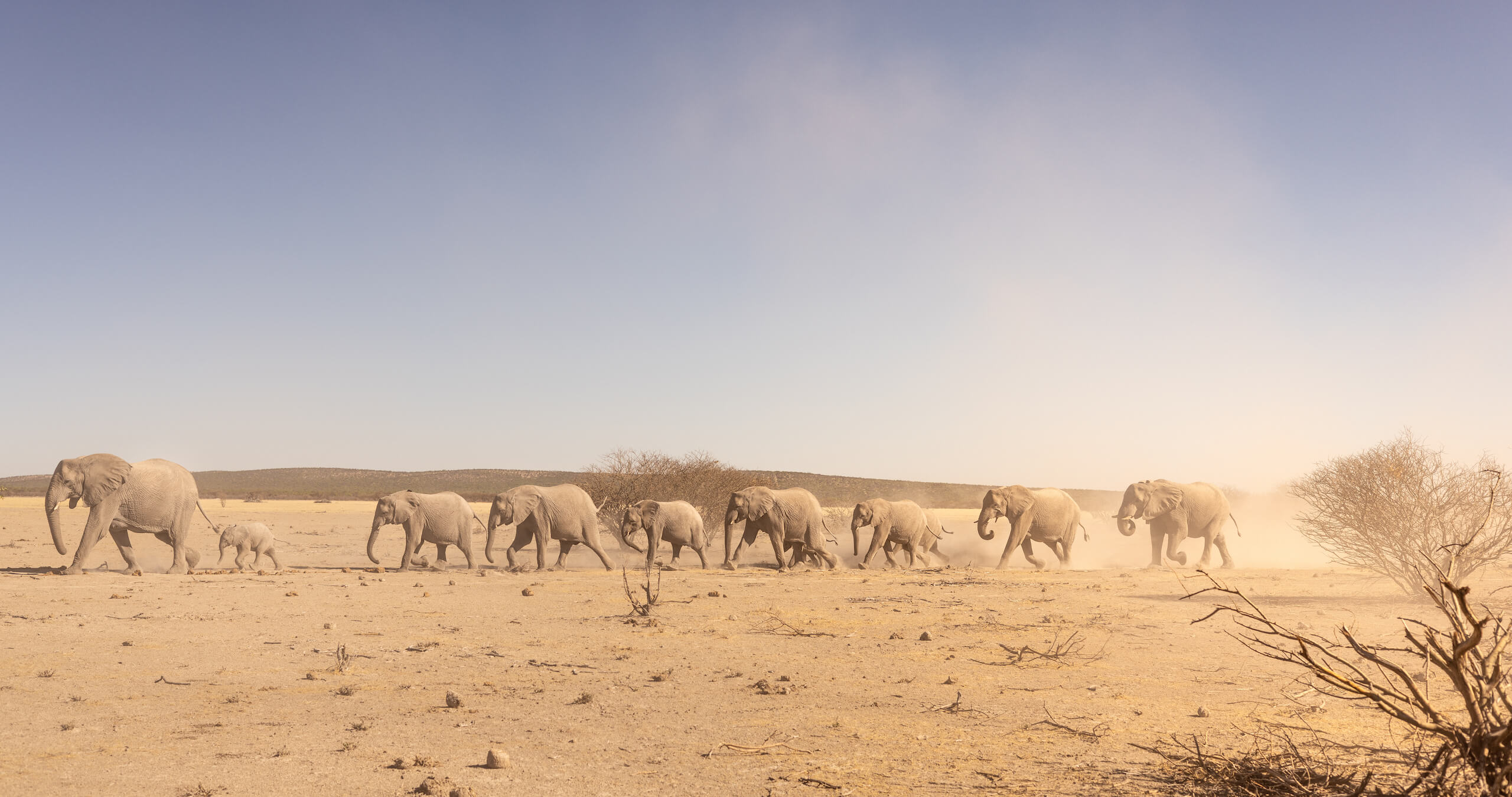
I resolve to return again in March, not just for the change of season, but for the opportunity to photograph more of this wild pageantry. I’ve been fortunate enough to visit many of Southern Africa’s parks and reserves, and Etosha Heights Private Reserve offers wildlife viewing that rivals the best. If you love the arid wilds of Namibia, or Etosha is on your wish list, seriously consider spending time in this exceptional reserve, away from the hustle and bustle of the national park.
Special Offers
Our special offers are designed to help you experience everything southern Africa has to offer whilst also saving some all-important pennies. Whether you’re about to embark on a once-in-a-lifetime solo trip, or are celebrating a special occasion, have a peek at our offers and see what could be in store for you.
